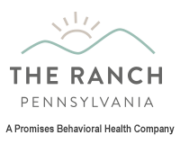Did you know that about 3,000 Pennsylvanians have died over the past five years because of opioid abuse, or that an astonishing 80 percent of people using heroin first became addicted to a prescription painkiller? With heroin in Pennsylvania costing less than beer, heroin abuse is an epidemic that crosses every social boundary. Here is what you need to know about heroin abuse and why awareness can help reverse the trend. Facts About Pennsylvania’s Heroin Problem Forget what you used to know about heroin, because today’s trends are alarming. For example:
- The demographics have changed. Today’s heroin user is a white male living in the suburbs, with the number of male and female users rising. The Pennsylvania State Coroners Association reports that there is a “thriving heroin presence in communities far beyond Harrisburg,” according to PennLive.com.
- Pennsylvania is 7th in the nation when it comes to drug overdose death rate.
- Prescription painkillers cost $1 per milligram, with many users needing as many as 120 milligrams per day. Heroin is only $10 a bag, but requires more over time to get the same high — meaning that heroin users wind up spending just as much on smack as they would on painkillers.
- Although our high opioid addiction rate has led to an increase in crime, the Pennsylvania Office of the Attorney General notes that “we can’t arrest our way out of the problem.” About 70 percent of Pennsylvania’s inmates have substance abuse problems.
- Legislation may help. “Good Samaritan” laws that provide protection for drug users who summon help for an overdose victim may save lives, as will making naloxone widely available. Naloxone reverses the effect of overdose. Other proposed legislation includes creating a prescription drug database that flags potential addicts.
Treating Heroin Addiction Addiction is a life-threatening but treatable disease. It is also complex, with numerous factors influencing each person’s addiction. The most effective treatment plans are customized to the specific needs of each individual, according to the National Institute on Drug Abuse, and they may include medically assisted detox, behavioral and psychological therapies, and spiritual therapy such as the support offered by 12 step groups. Because a person struggling with addiction who enrolls in treatment is likely to relapse without adequate post-rehab support, aftercare is essential. For more information about heroin addiction and treatment or to learn about the care we provide at our Pennsylvania rehab center, contact The Ranch PA today. Photo Via

